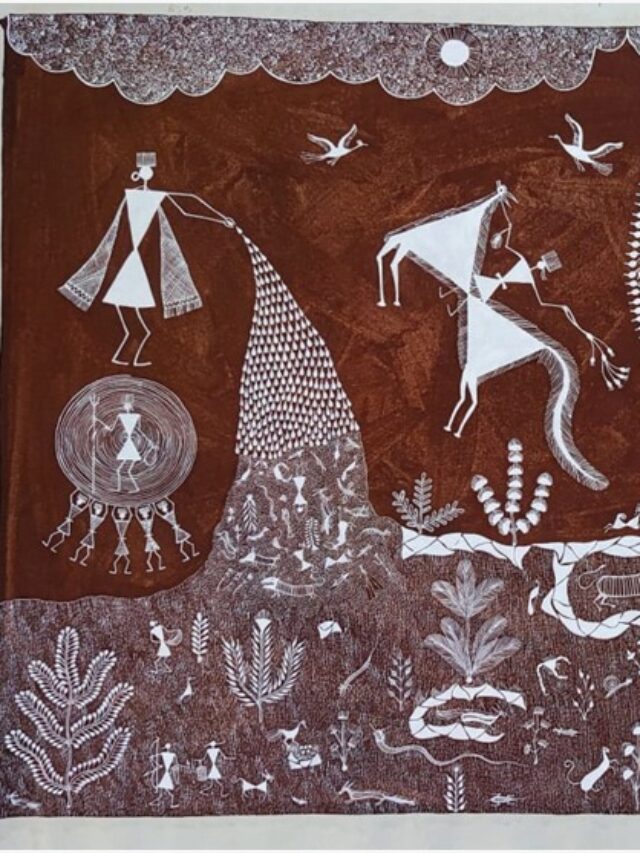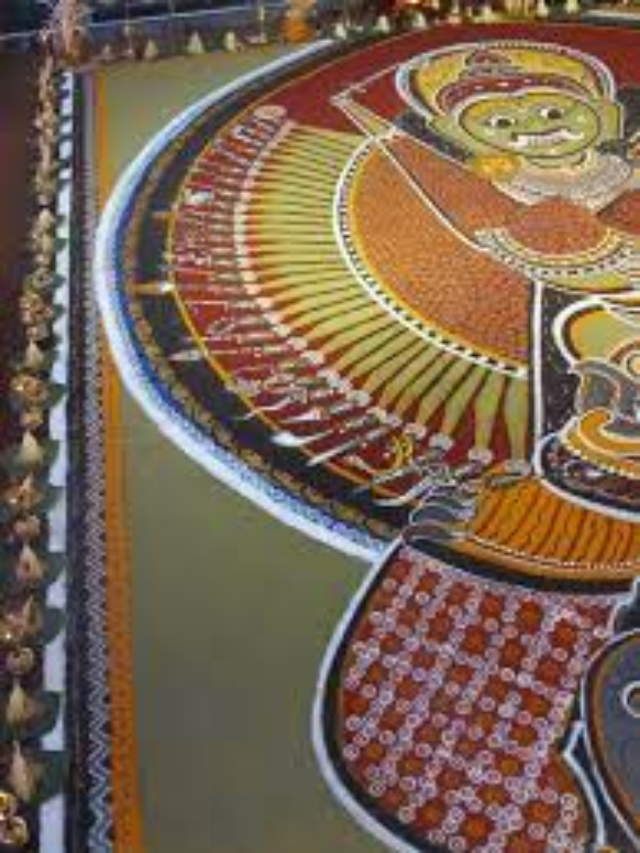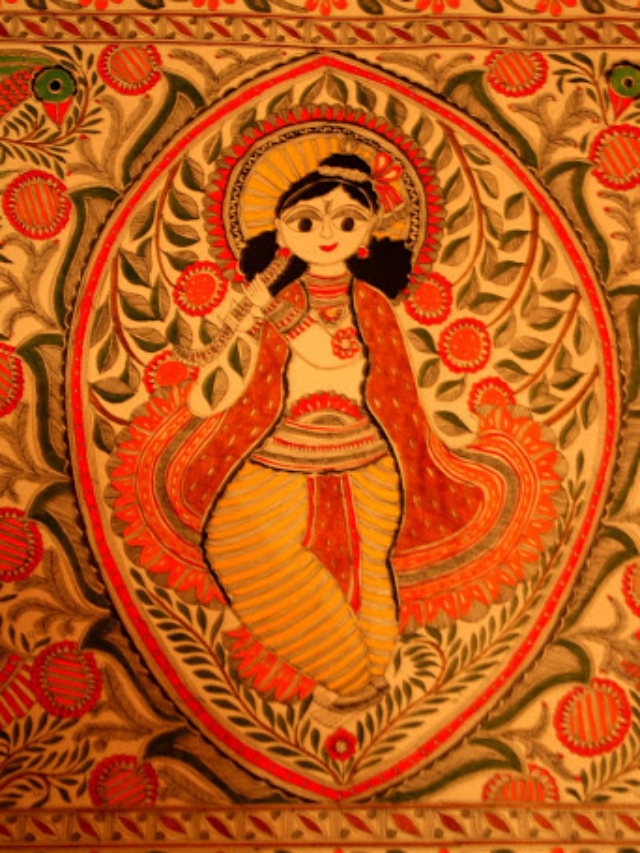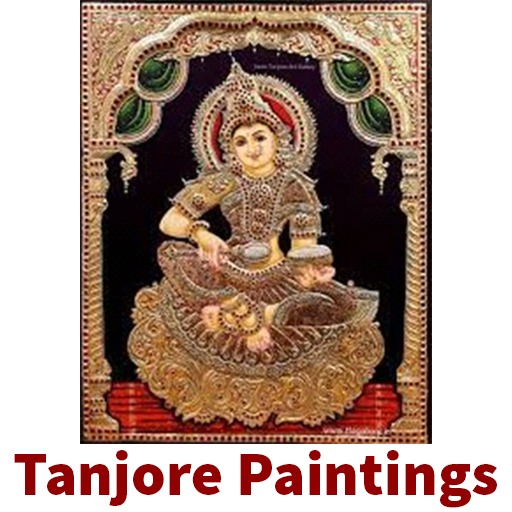Tanjore Paintings are a south Indian artwork form developed In Thanjavur, also known as Tanjore, In Tamilnadu, southern India, In The 16th century. By their appealing illustrations of puranic themes, these Tanjore paintings convey a sense of class and durability. This historical artist’s work may be traced back to Tanjavur, the old capital of the Chola State, and is famous among modern Indian women for displaying their artistic preferences and tastes.
The majority of Thanjavur paintings depict events from Hindu treasures or religious literature that are envisioned and drawn in the painting. Objects that are Muslim, Jain, Sikh, and secular are frequently featured in the painting. A classic Tanjore artwork would feature a deity with a very well face, oval-shaped eyes, and body. Arches, drapes, and other elements would enclose the central figure.
Tanjore Paintings


History:
Tanjore as it is known locally has many reasons to be proud of its cultural legacy. Tanjore, approximately three-hundred kilometers from Tamil Nadu’s center, Chennai, was indeed the cultural capital of the Gupta Civilization, which peaked in the 18th century. UNESCO has named several of the world’s most powerful sites and temples. Its rich and old heritage of the Chola period, which ruled the districts of Thanjavur, Trichy, and Madurai during the 16th century, is preserved in the vibrant statues and paintings on the walls of the temple of Tanjore.
Painting is the most famous of Thanjavur’s jewels, and it is internationally renowned for its make various and unique manner of generating a 3D look on every single artwork. Tanjore painting are appreciated by Maratha lords, and were supported by Chola monarchs who controlled south Indian in the 16th and 17th centuries. The Cholas were major artwork and sculpture fans, and that is why when soon as it arrives in Tamil Nadu, you can’t keep your eyes off the massive temples that embody the Dravidian design approach.
Features:
Because most of these paintings are imprinted on solid wood panels, Tanjore paintings are called (Palagai Padam) which means a picture on a wooden plant. The bulk of the figurines are finely embellished and filled with vivid hues, making this antique indigenous style of art divine in appearance. Historically, pictures were adorned with expensive gemstones such as gems and pearls. Semi-precious Jaipur gemstones are now commonly utilized for the same reason. One of the distinctive qualities of Tanjore artwork is the plumpness in the deities’ cheeks, that radiates a particular pure appearance in all Tanjore artworks you might come across.Ancient Art:
Tanjore paintings are strongly rooted in the cultural history of the region from where they emerged, yet the painters employ their ability and imagination to produce gems of that artwork form. Tanjore’s art is mostly inspired by Hindu mythology.There are many other paintings depicting Lord Krishna as a toddler in different prankish poses. Significant mythical events such as Meenakshi’s wedding, Radha and Krishna’s captivated gestures, and so on are depicted in the paintings. The resolution work of each image is meticulously created by the artists of this ethnic art style, giving each portrait its distinct 3D aspect. Such paintings are given as gifts at festivals such as Diwali, weddings, and Pongal.
Patronage and Roots:
First from 16th and 17th centuries, once the Vijayanagara Rayas deployed the Nayaka rulers to manage their vast empire in southern India, Tanjore paintings became influenced by Indian artwork.The Nayakas were outstanding art and literary supporters. The region came under Maratha’s authority, and the rulers promoted the flourishing of culture and art. During this time, Tanjore painting truly developed and developed into the design aesthetic that we today recognize. Large paintings depicting deities, and also Maratha emperors, courtiers, and nobles, graced Maratha castles and buildings.


Tanjore Techniques:
Palagai Padam refers to Tanjore paintings that are often produced on jackfruit. Tanjore paintings are known for their use of brilliant colors and gold leaf decorations, as well as cut pearls, glass, and valuable and semi-precious gemstones.
Although artists employed natural colors like veggies and natural dyes earlier, artificial paints have gradually taken over. Tanjore paintings use a stunning color scheme of bright reds, greens, and blues. This, combined with the paintings’ complexity and dense designs, distinguishes them from other Indian artwork traditions.
Masterpiece:
The most challenging part of the process of creating a masterpiece is the development of the canvas. The design is initially created on the canvas substrate, which is commonly muslin.
The muddy paste would then be created by combining chalky or zinc powder, Arabic glue, and a water-soluble glue. A small muslin cloth is used to apply the fixative on the wooden board. The plan established in the first step of the artwork design phase is then gradually and carefully decorated with a variety of add-ons.
To improve the attractiveness of a Tanjore paintings, trying to cut glass, moderately stones, rich colors, and ribbons are usually used. To increase the beautiful effect of the painting, twenty-two karat gold sheets are attached in various areas of a figure, while the other of the areas are decorated with day-glow hues that reflecting the brilliance of the painting.
Because to its use top gold foil, a genuine Tanjore painting should last generations without rusting, and artwork will be significantly more expensive than the others.
Artist Community:
Tanjore paintings were formerly created by the Raju community of Tanjore, as well as the Madurai Naidu group. Artists, who were primarily Telugu speakers from Andhra Pradesh, relocated to Tamil Nadu.
The artists valued patronage so much that the scale of their paintings fluctuated depending on the context and the patron’s preferences. Tanjore painting required a lot of patience and skill on the part of the artists. Additionally, the skilled craftsmen had to undertake art-making, which was regarded as a sacred activity, with some level of religion and modesty.
Conclusion:
As Tanjore artists have shown over the decades. These works require a great deal of devotion, patience, and perfection. It can take anywhere from four to seven months to finish an original Tanjore painting.
To summarize, Tanjore painting is the finest and therefore only method for an artist to express himself via his best artwork. This ancient kind of tiny artwork survives to this day thanks to the hard workmanship and passion of Tamil Nadu’s painters and prized for its uniqueness.
For more posts like this visit Tribal Handcrafts blog.






